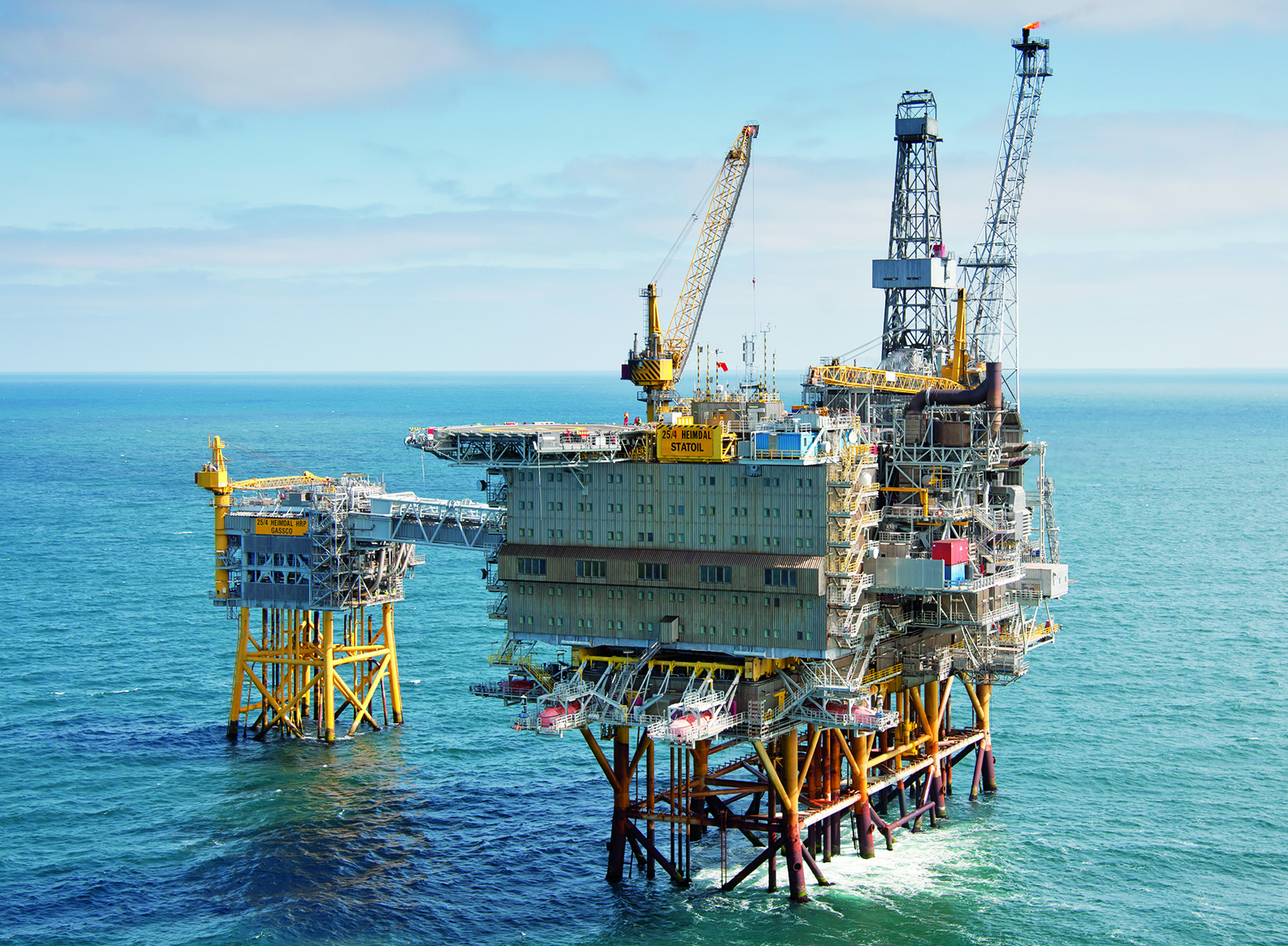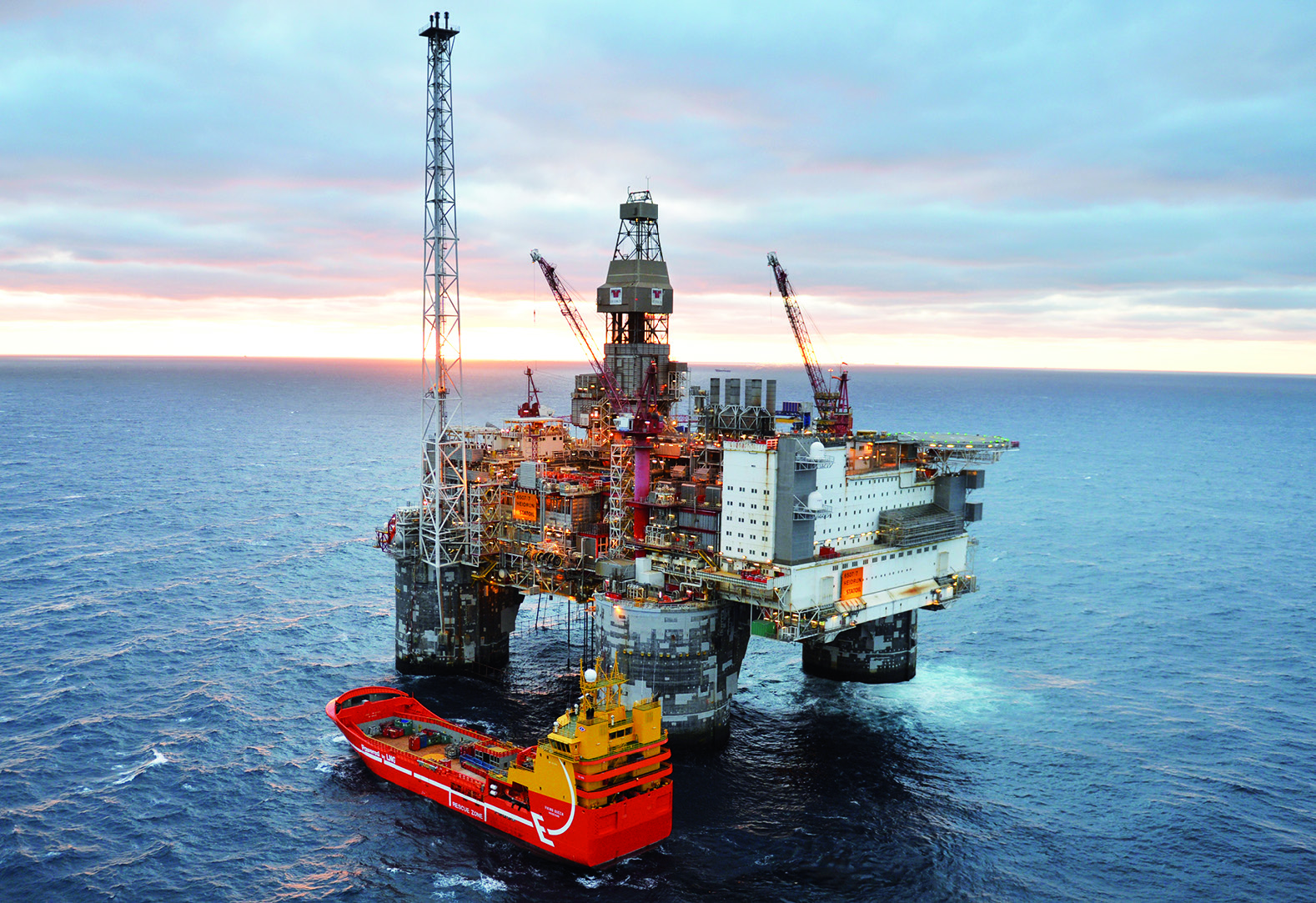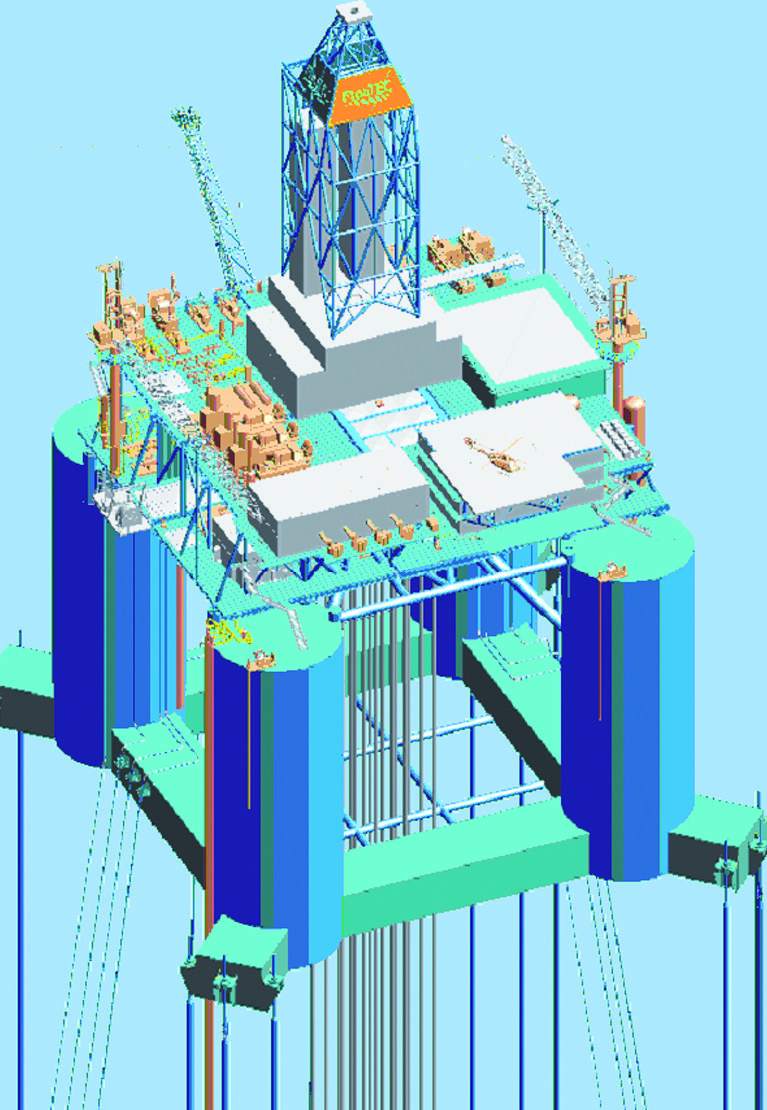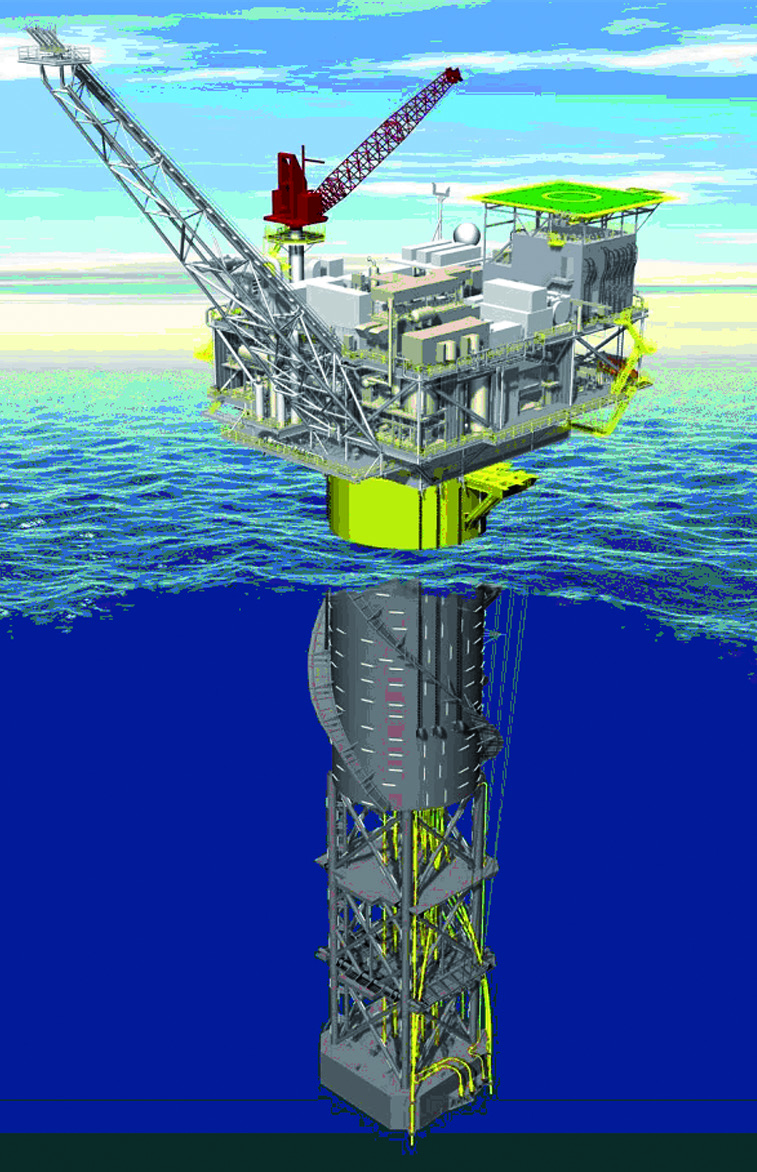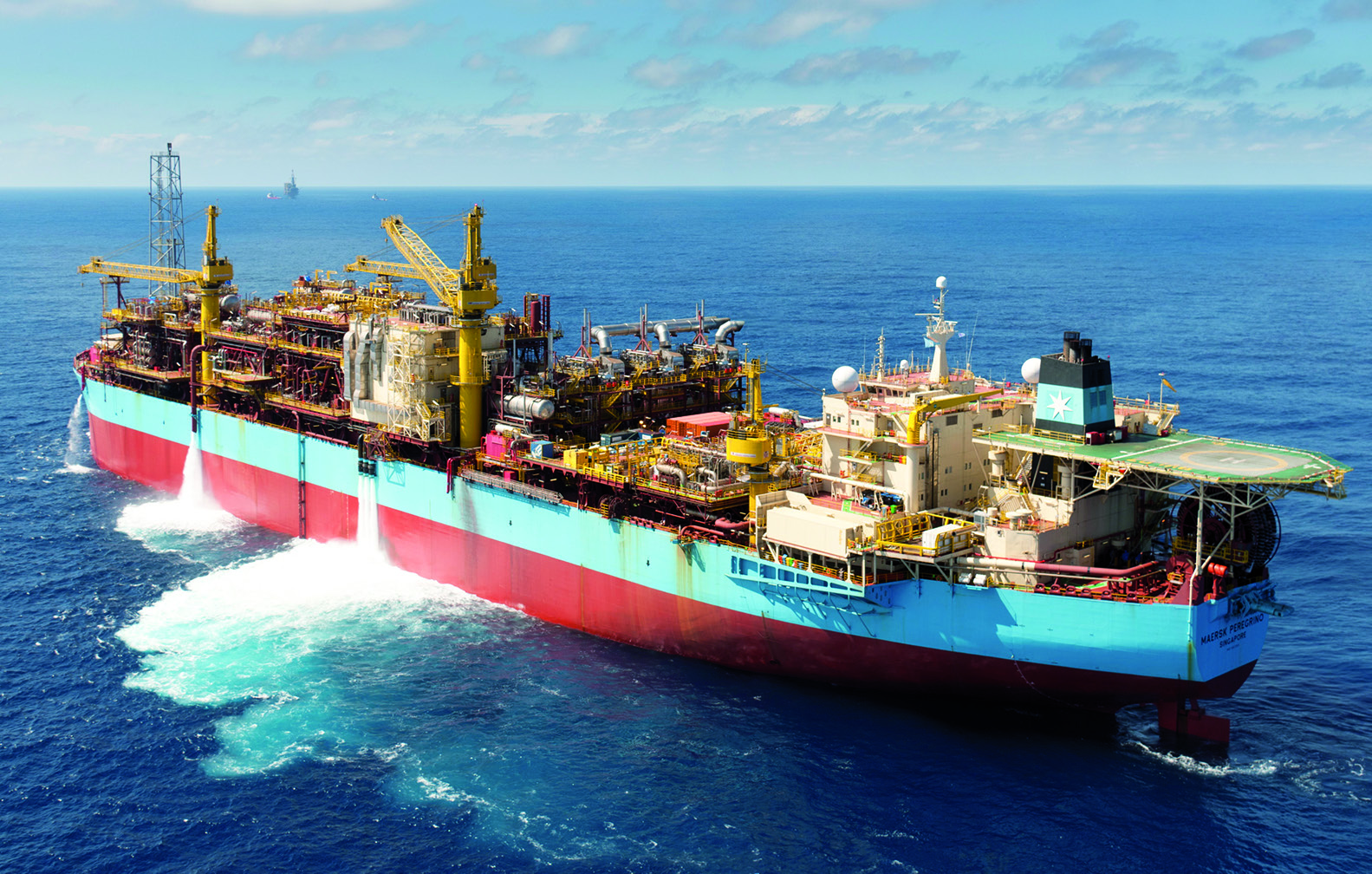

OFFSHORE PRODUCTION AND STORAGE INSTALLATIONS
Depending of water depths, fixed or floating installations are used for offshore oil and gas production.
Fixed installation is a bottom-supported offshore facility permanently affixed to the sea floor. Fixed steel installations for oil and gas production are used at water depths ranging to about 150m. In most cases they consist of a jacket: a steel frame construction piled to the seabed. The jacket supports a sub-frame with production equipment and accommodation deck on top of it.
Gravity Base Structures (GBS) are fixed installations applied to remote fields in deep and harsh waters in the central and northern part of the North Sea. They consist of a combination of a number of large diameter towers, placed on top of a large area base which contains also storage capacity. Pilling to the seabed is not required because of the large size of the base and the mass of the structure, but the sea-bed has to be levelled.
Floating installation is an offshore buoyant facility designed to provide hydrocarbon processing and/or hydrocarbon storage, and to off-load hydrocarbons. This installation is securely and substantially moored so that it cannot be moved without a special effort. The structural configurations of these installations may be ship-shaped or barge-shaped, column-stabilised, Tension Leg Platform Installations and Spar Installations.
Semi-submersible production installation is permanently moored by eight to twelve point catenaries. This installation processes and off-loads hydrocarbons without storage capacity. Motion of the semi-submersible does not allow wells to be completed on deck. So they are usually completed sub-sea. They are connected to the production wells through 4-inch to 12-inch diameter pipes know as risers. There can be as many as 60-70 risers connected to one platform.
Tension leg platform (TLP) consists of a semi-submersible hull vertically moored by an array of very stiff tendons held in tension by the buoyancy of the hull. The tendons, arranged at each corner of the hull, are connected to the columns of the hull and foundations on the seabed. The major advantage of a TLP is that the limited heave response allows for surface trees and rigid production risers.
Spar platform consists of a single, vertical, large diameter cylinder that support the topside. The hull is moored as a taut catenary system of six or more lines anchored into the seabed. By virtue of a very deep draft, exceeding 200m, spars have significantly reduced heave response and like tension leg platforms, they can accommodate surface trees and rigid risers. When onboard storage is not required, the cylindrical midsection is replaced with a truss section. The truss spar offers a lighter and more cost-effective alternative while retaining the motion characteristics.
Floating production, storage and offloading units (FPSOs) are ship-shaped structures used for exploitation of marginal fields. Their main advantage is that they are standalone structures that do not need external infrastructure such as pipelines or storage. The FPSO is a floating facility mainly installed near oil and gas production wells to receive, process, store, and export hydrocarbons. It consists of a tanker type hull or barge, often converted from an existing crude oil tanker. The wellheads or subsea risers from the see bottom are located on a central or bow-mounted turret so that the ship can rotate freely to point into wind, waves or current. The main process is placed on the deck, while the hull is used for storage and offloading to a shuttle tanker.
